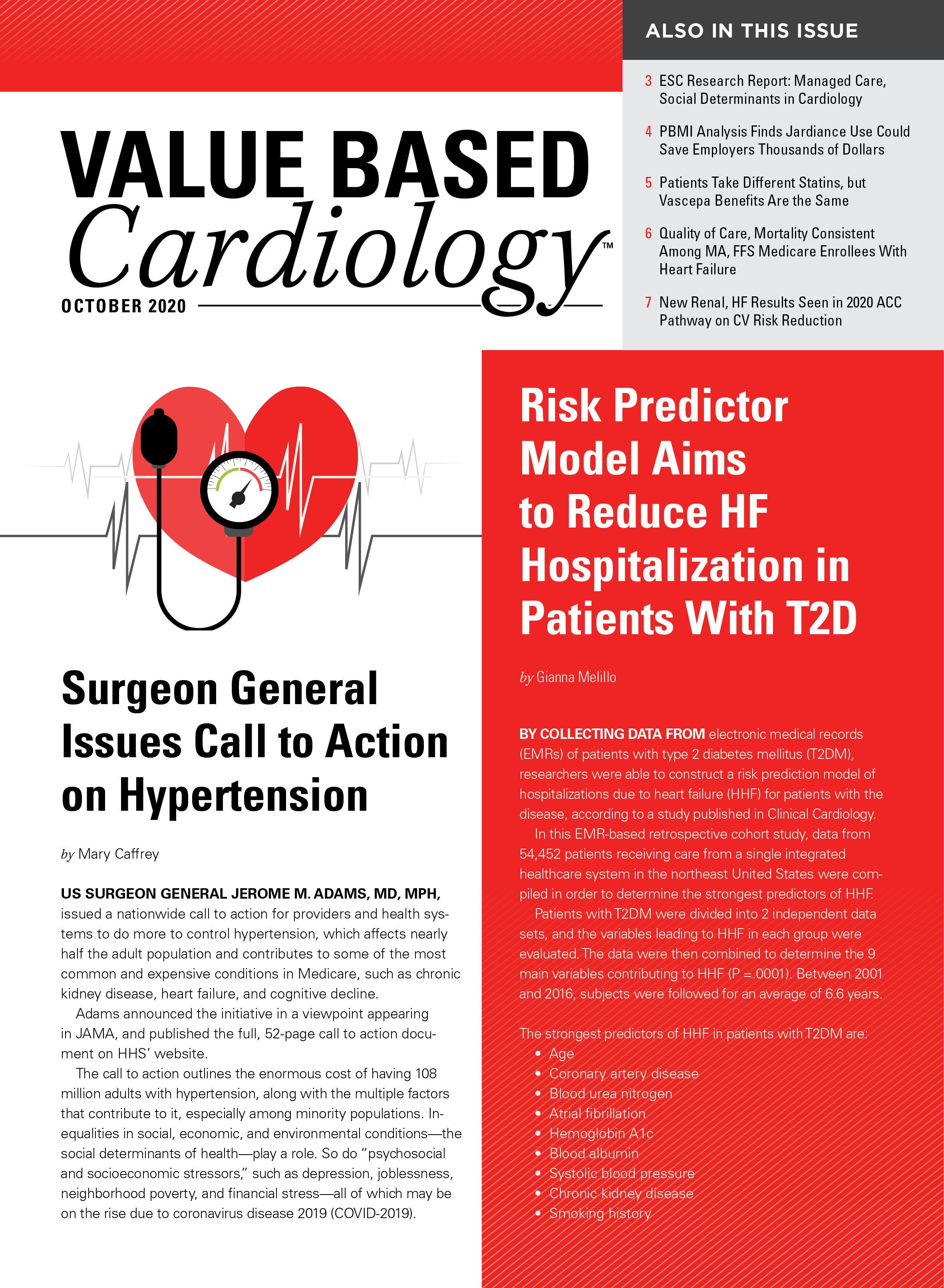- Center on Health Equity & Access
- Clinical
- Health Care Cost
- Health Care Delivery
- Insurance
- Policy
- Technology
- Value-Based Care
Risk Predictor Model Aims to Reduce HF Hospitalization in Patients With T2D
Researchers constructed a risk prediction model of hospitalizations due to heart failure (HHF) for patients with type 2 diabetes mellitus (T2DM), according to a Clinical Cardiology study.
By collecting data from electronic medical records (EMRs) of patients with type 2 diabetes mellitus (T2DM), researchers were able to construct a risk prediction model of hospitalizations due to heart failure (HHF) for patients with the disease, according to a study published in Clinical Cardiology.
In this EMR-based retrospective cohort study, data from 54,452 patients receiving care from a single integrated healthcare system in the northeast United States were compiled in order to determine the strongest predictors of HHF.
Patients with T2DM were divided into 2 independent data sets, and the variables leading to HHF in each group were evaluated. The data were then combined to determine the 9 main variables contributing to HHF (P =.0001). Between 2001 and 2016, subjects were followed for an average of 6.6 years.
The strongest predictors of HHF in patients with T2DM are:
- Age
- Coronary artery disease
- Blood urea nitrogen
- Atrial fibrillation
- Hemoglobin A1c
- Blood albumin
- Systolic blood pressure
- Chronic kidney disease
- Smoking history
"High-risk" patients were classified as such if they met a quantitative threshold of >5% probability of HHF within 5 years.
The study included patients with preexisting T2DM, defined as “patients meeting the diagnostic criteria within two years of the first EMR-documented encounter,” and newly diagnosed patients with T2DM, or “those first meeting diagnostic criteria more than 2 years after the first EMR-documented encounter.” Any patients with T2DM with previously documented HHF were excluded.
According to researchers, “T2DM affects nearly 10% of the United States adult population, and the morbidity and mortality associated with T2DM are often attributable to cardiovascular (CV) disorders.” In addition, 44% of hospital admissions relating to heart failure list diabetes as a comorbidity.
The most common CV risk factors listed in patients’ EMRs were hypertension (72%), hyperlipidemia (71%), coronary artery disease (21%) and prior myocardial infarction (5%).
These findings prompted researchers to create a prediction model aimed at reducing costly hospital visits and guiding therapeutic decisions.
The authors state, “The practical intent of risk prediction models is to identify high-risk patients such that cost‐efficient provision of advanced management strategies (eg, a novel, efficacious, yet expensive pharmaceutical) can be directed toward those patients most likely to experience untoward events, thus minimizing the number needed to treat for benefit.”
Researchers hope future studies will evaluate the calibration of their model in new settings, to better gauge when providers should take action to prevent such hospitalizations.
Reference:
Williams BA, Geba D, Cordova JM, Shetty SS. A risk prediction model for heart failure hospitalization in type 2 diabetes mellitus [published online December 14, 2019]. Clin Cardiol. doi: 10.1002/clc.23298.

Exploring Pharmaceutical Innovations, Trust, and Access With CVS Health's CMO
July 11th 2024On this episode of Managed Care Cast, we're talking with the chief medical officer of CVS Health about recent pharmaceutical innovations, patient-provider relationships, and strategies to reduce drug costs.
Listen
Opportunities and Obstacles Associated With the Medicare Diabetes Prevention Program
October 3rd 2025This study describes the current opportunities and obstacles associated with Medicare Diabetes Prevention Program implementation from the novel perspective of program suppliers across the US.
Read More
